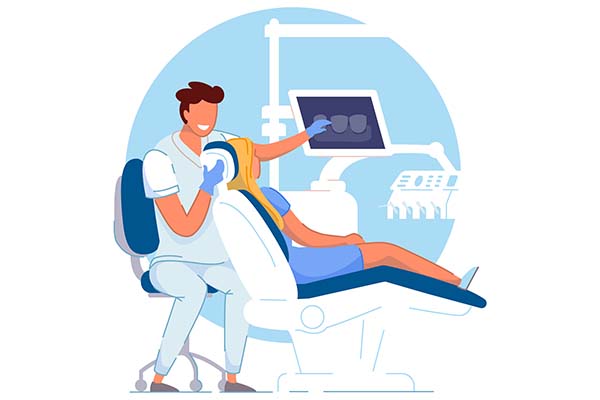 An orthodontist typically offers clear aligner treatments for patients that want a reliable and discreet way to straighten their smile. This blog post discusses some of the more frequently asked questions that orthodontists receive regarding clear aligners and the benefits they can provide. Read on to learn more about clear aligners.
An orthodontist typically offers clear aligner treatments for patients that want a reliable and discreet way to straighten their smile. This blog post discusses some of the more frequently asked questions that orthodontists receive regarding clear aligners and the benefits they can provide. Read on to learn more about clear aligners.
Five common questions about clear aligners answered by an orthodontist
Some of the more frequently asked questions about clear aligners are about what they are exactly, how they are different from braces, who they are recommended for, and how long the treatment process takes. Having answers to these questions and more can help you make a better decision about treatment.
1. What are clear aligners?
Clear aligners are clear trays that are worn over teeth and slowly shift teeth into their ideal position. They have gained popularity over the past few years due to the advantages they provide over traditional braces. Notably, they are removable, but patients must wear them all day, except when eating or brushing their teeth. In addition, clear aligners produce reliable and long-lasting results when patients follow the treatment plan provided by their orthodontist.
2. How are clear aligners different from braces?
Clear aligners are removable trays, whereas braces use a bracket and wire system to move teeth into an ideal position. Perhaps the most notable benefit of clear aligners is that they are transparent. This means other people are not likely to notice them, whereas braces are far more noticeable. Clear aligners are also removable, which can make it easier to keep teeth clean.
3. When are clear aligners a good option?
Clear aligners are most suitable for mild to moderate teeth and jaw misalignments, and they do not work as well for severe malocclusions. If the alignment issue is not severe and the patient desires a more discreet, removable treatment option, then clear aligners may be the way to go. However, the ability to remove the aligners does come at an increased responsibility to keep them clean and not misplace them.
4. How long does clear aligner treatment take?
The clear aligner treatment process can take anywhere from six months to close to two years. On average, clear aligners patients see results in less time than with traditional braces. The specific time it takes depends on how well the patient follows the treatment plan and on the severity of the misalignment that is being corrected.
5. What can I expect after clear aligner treatment?
It is important for patients to wear a retainer as directed by the orthodontist after clear aligner treatment. Otherwise, teeth can shift back into their original position. Good oral hygiene practices are also of the utmost importance.
Schedule a consultation with our orthodontist
You can learn more about clear aligners and decide whether it is right for you during a consultation visit at our dental office. We take pride in helping our patients improve their smile and oral health through better teeth and jaw alignment. To start the process, give us a call today.
Request an appointment or call Price Family Orthodontics at 972-528-5519 for an appointment in our Frisco office.
Related Posts
Is it possible to find an orthodontist in a pinch when out of state or away on business? Yes. For people who travel for business and need immediate orthodontic treatment due to an emergency, there is no reason to worry. There are several options for patients who need to find an orthodontist quickly when traveling.While…
There are several compelling reasons to find an orthodontist for fixing crooked, crowded, or misaligned teeth—and they are not all cosmetic. Yes, having a straight smile is attractive, but the benefits do not stop there. Here is a closer look at some key reasons to find an orthodontist for teeth straightening.Many dentists will offer teeth…
Maintaining a healthy lifestyle includes taking care of one’s teeth, but many people may find it difficult to find an orthodontist whose office hours and available services match a busy everyday schedule. Despite working long hours, caring for children full time, or having many daily commitments, people can still choose an orthodontist to help them…
